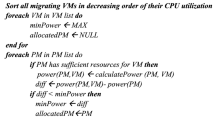Abstract
Recently distributed real-time database systems are intended to manage large volumes of dispersed data. To develop distributed real-time data processing, a reality and stay competitive well defined protocols and algorithms must be required to access and manipulate the data. An admission control policy is a major task to access real-time data which has become a challenging task due to random arrival of user requests and transaction timing constraints. This paper proposes an optimal admission control policy based on deep reinforcement algorithm and memetic algorithm which can efficiently handle the load balancing problem without affecting the Quality of Service (QoS) parameters. A Markov decision process (MDP) is formulated for admission control problem, which provides an optimized solution for dynamic resource sharing. The possible solutions for MDP problem are obtained by using reinforcement learning and linear programming with an average reward. The deep reinforcement learning algorithm reformulates the arrived requests from different users and admits only the needed request, which improves the number of sessions of the system. Then we frame the load balancing problem as a dynamic and stochastic assignment problem and obtain optimal control policies using memetic algorithm. Therefore proposed admission control problem is changed to memetic logic in such a way that session corresponds to individual elements of the initial chromosome. The performance of proposed optimal admission control policy is compared with other approaches through simulation and it depicts that the proposed system outperforms the other techniques in terms of throughput, execution time and miss ratio which leads to better QoS.





Similar content being viewed by others
References
Pandey, S., & Shanker, U. (2020). Transaction scheduling protocols for controlling priority inversion: A review. Computer Science Review, 35, 100215.
Pandey, S., & Shanker, U. (2018). IDRC: A distributed real-time commit protocol. Procedia Computer Science, 125, 290–296.
Li, X., Ren, C., & Yue, M. (2011). A distributed real-time database index algorithm based on B+ tree and consistent hashing. Procedia Engineering, 24, 171–176.
Garcés-Erice, L. (2011). Admission control for a responsive distributed middleware using decision trees to model run-time parameters. Parallel Computing, 37(8), 379–391.
Zhan, J., Zhang, X., Jiang, W., Ma, Y., & Jiang, K. (2018). Energy optimization of security-sensitive mixed-criticality applications for distributed real-time systems. Journal of Parallel and Distributed Computing, 117, 115–126.
Son, Y. W. S. H., Stankovic, J. A., & Kang, K. D. (2003). QoS management in distributed real-time databases. In 24th IEEE real-time systems symposium (RTSS’03), Cancun, Mexico (pp. 86–97).
Tripathi, R., Vignesh, S., Tamarapalli, V., Chronopoulos, A. T., & Siar, H. (2017). Non-cooperative power and latency aware load balancing in distributed data centers. Journal of Parallel and Distributed Computing, 107, 76–86.
Kang, B., & Choo, H. (2018). An SDN-enhanced load-balancing technique in the cloud system. The Journal of Supercomputing, 74(11), 5706–5729.
Yuan, H., Bi, J., Song, X., Li, B. H., Lin, T., Zhang, J., et al. (2016). Revenue-aware request admission control in distributed simulation data centers. In L. Zhang (Ed.), Theory, methodology, tools and applications for modeling and simulation of complex systems (pp. 615–623). Singapore: Springer.
Kang, W., Son, S. H., & Stankovic, J. A. (2009). DRACON: QoS management for large-scale distributed real-time databases. JSW, 4(7), 747–757.
Elbagir, F. A., Khalid, A., & Khanfar, K. (2016). A survey of commit protocols in distributed real time database systems. International Journal of Emerging Trends & Technology in Computer Science, 31(2), 61–66.
Srivastava, A., Shankar, U., & Tiwari, S. K. (2012). Transaction management in homogenous distributed real-time replicated database systems. International Journal of Advanced Research in Computer Science and Software Engineering, 2(6), 190–196.
Wang, Y., Wang, Q., Wang, H., & Dai, G. (2004). Dynamic adjustment of execution order in real-time databases (p. 87).
Achour, F., Bouazizi, E., & Jaziri, W. (2016). Scheduling approach for enhancing quality of service in real-time DBMS. In International baltic conference on databases and information systems. Cham: Springer (pp. 126–135).
Singh, P. K., & Shanker, U. (2018). A priority heuristic policy in mobile distributed real-time database system. In M. L. Kolhe (Ed.), Advances in data and information sciences (pp. 211–221). Singapore: Springer.
Pandey, S., & Shanker, U. (2018). On using priority inheritance-based distributed static two-phase locking protocol. In M. L. Kolhe (Ed.), Advances in data and information sciences (pp. 179–188). Singapore: Springer.
Pandey, S., & Shanker, U. (2020). RAPID: A real time commit protocol. Journal of King Saud University-Computer and Information Sciences. https://doi.org/10.1016/j.jksuci.2020.04.006.
Sutton, R. S., McAllester, D. A., Singh, S. P., & Mansour, Y. (2003). Policy gradient methods for reinforcement learning with function approximation. In NIPS.
Hastings, W. K. (1970). Monte Carlo sampling methods using markov chains and their applications. Biometrika, 1, 97–109.
Donoso, Y., & Fabregat, R. (2016). Multi-objective optimization in computer networks using metaheuristics. London: Auerbach Publications.
Pires, F. L., Melgarejo, E., & Barán, B. (2013). Virtual machine placement. A multi-objective approach. In XXXIX Latin American computing conference (CLEI 2013).
Chakraborty, M., & Chakraborty, U. K. (1997). An analysis of linear ranking and binary tournament selection in genetic algorithms. In Information, communications and signal processing, 1997. ICICS, Proceedings of International Conference on IEEE (Vol. 1, pp. 407–411).
Lee, V. C., Lam, K. W., & Hung, S. L. (2002). Concurrency control for mixed transactions in real-time databases. IEEE Transactions on Computers, 51(7), 821–834.
Kang, K. D., Son, S. H., & Stankovic, J. A. (2004). Managing deadline miss ratio and sensor data freshness in real-time databases. IEEE Transactions on Knowledge and Data Engineering, 16(10), 1200–1216.
Author information
Authors and Affiliations
Corresponding author
Additional information
Publisher's Note
Springer Nature remains neutral with regard to jurisdictional claims in published maps and institutional affiliations.
Rights and permissions
About this article
Cite this article
Chauhan, N.R., Tripathi, S.P. Optimal Admission Control Policy Based on Memetic Algorithm in Distributed Real Time Database System. Wireless Pers Commun 117, 1123–1141 (2021). https://doi.org/10.1007/s11277-020-07914-x
Accepted:
Published:
Issue Date:
DOI: https://doi.org/10.1007/s11277-020-07914-x




